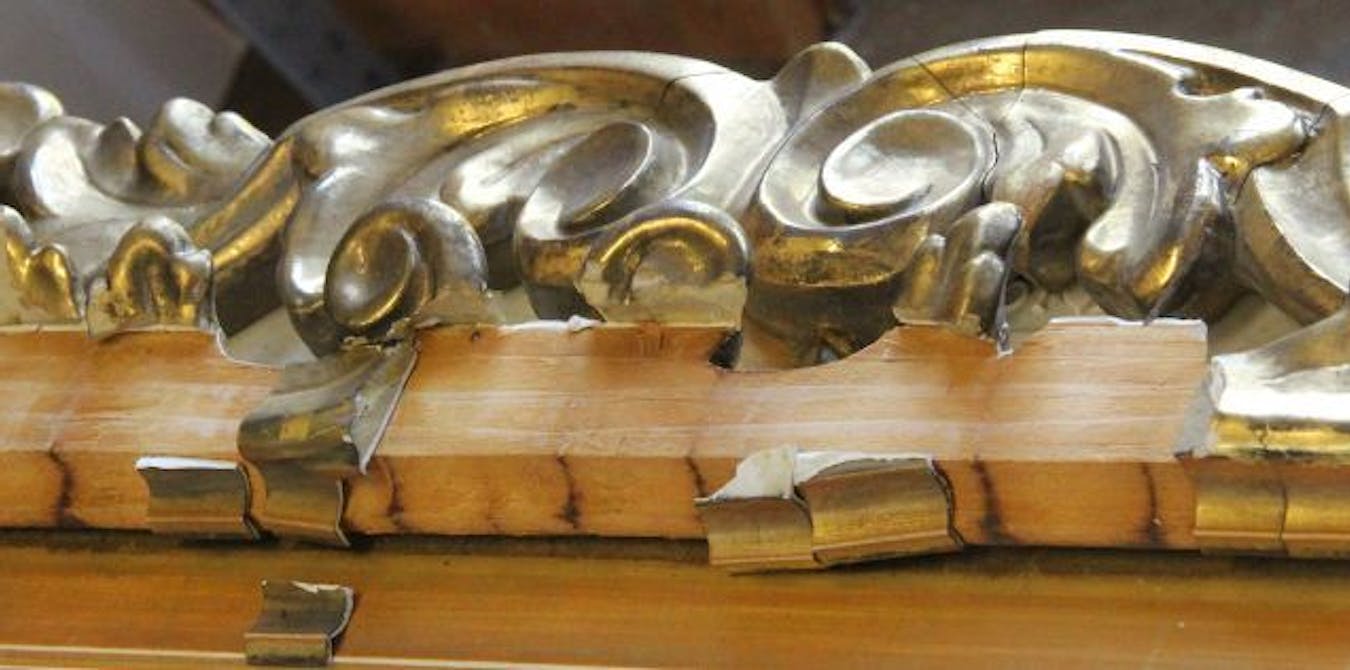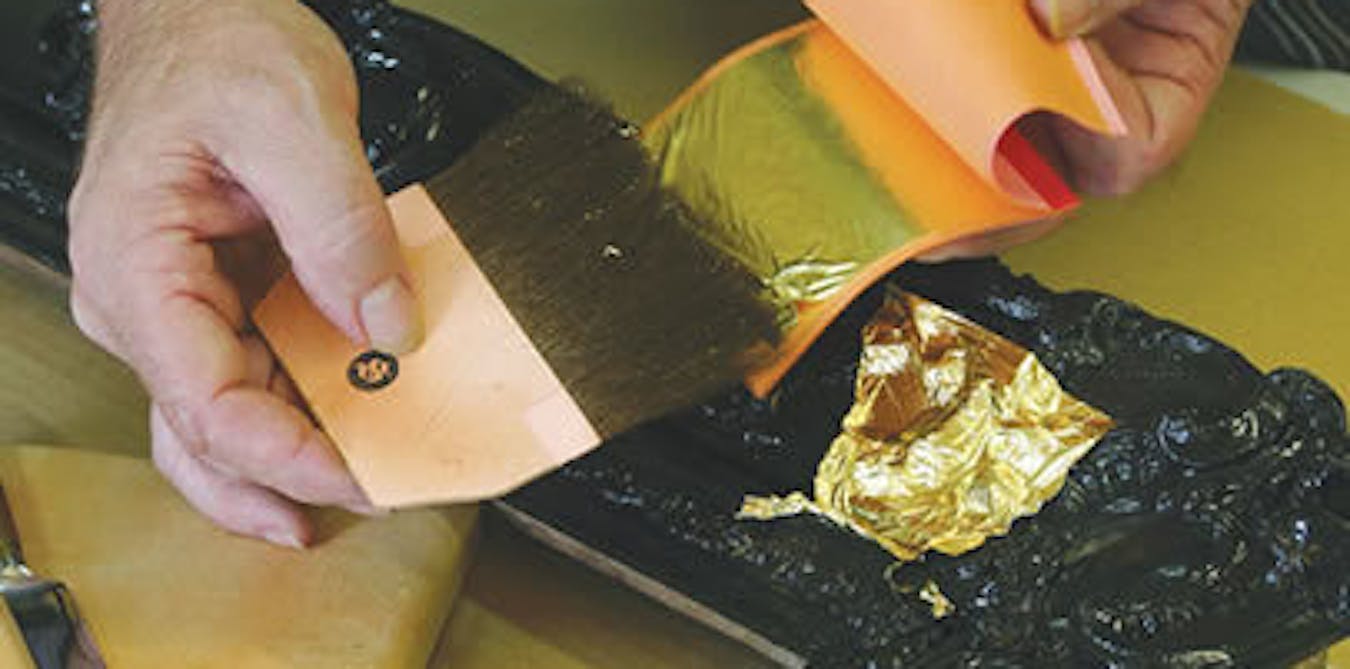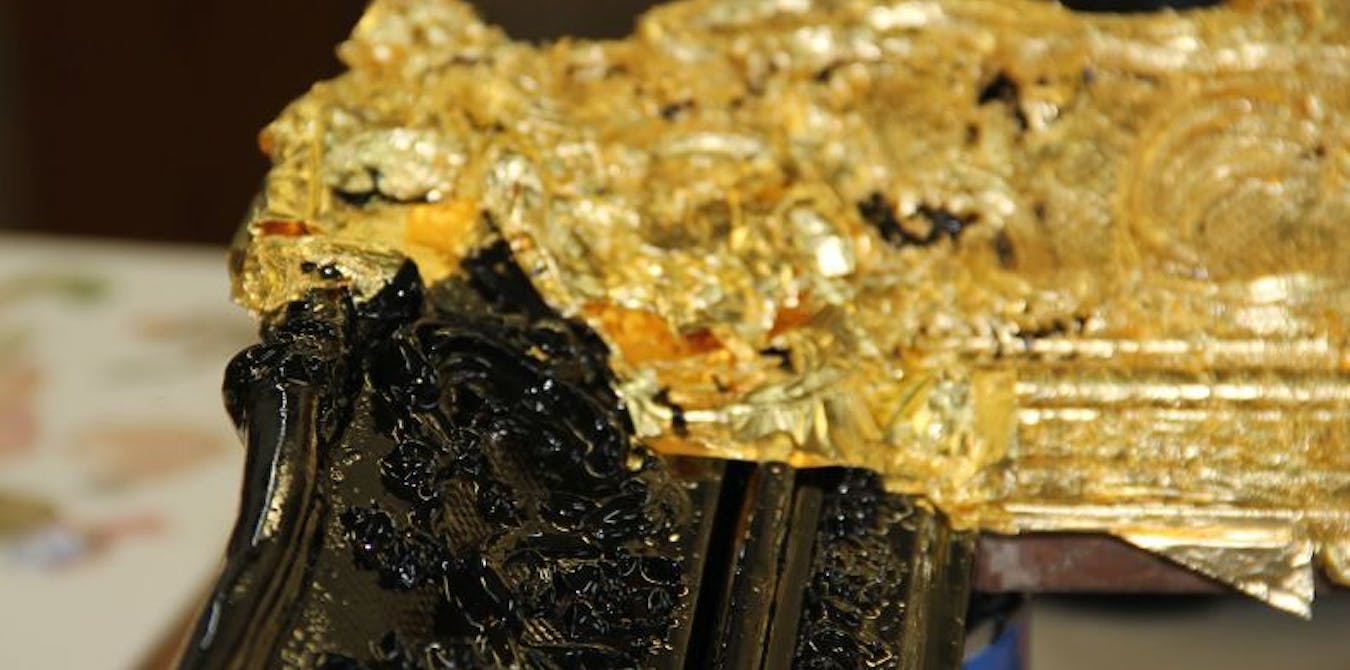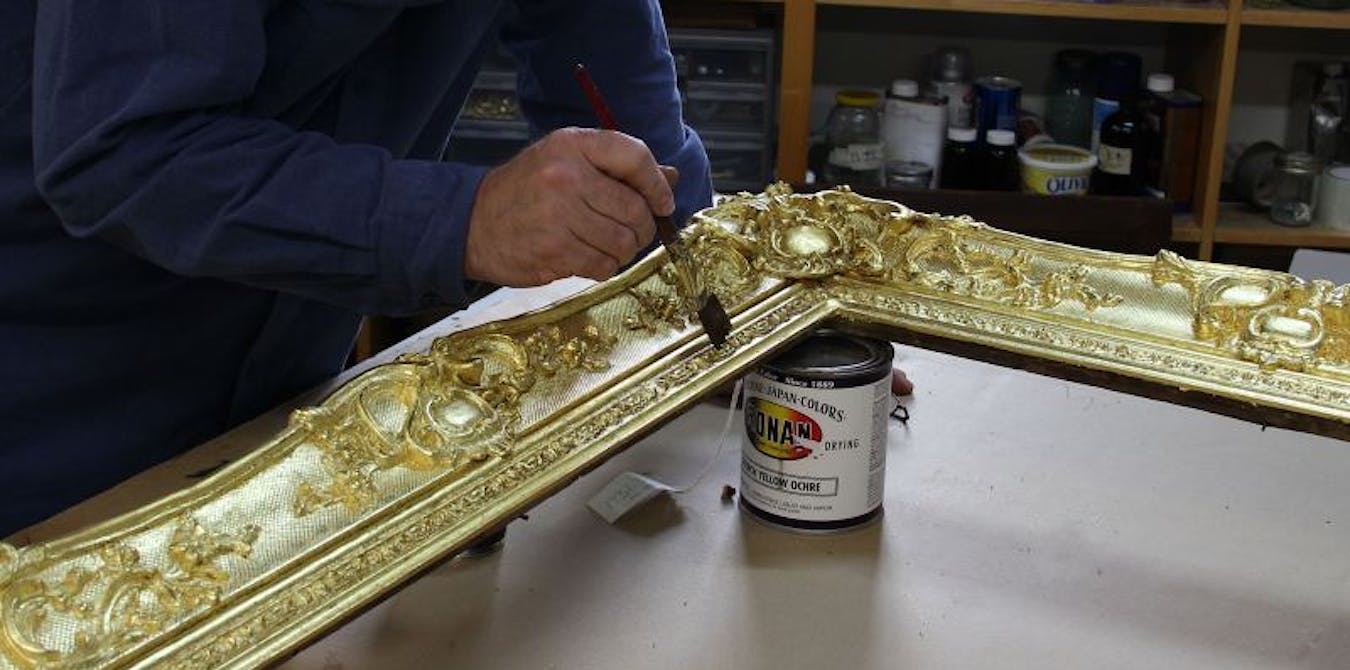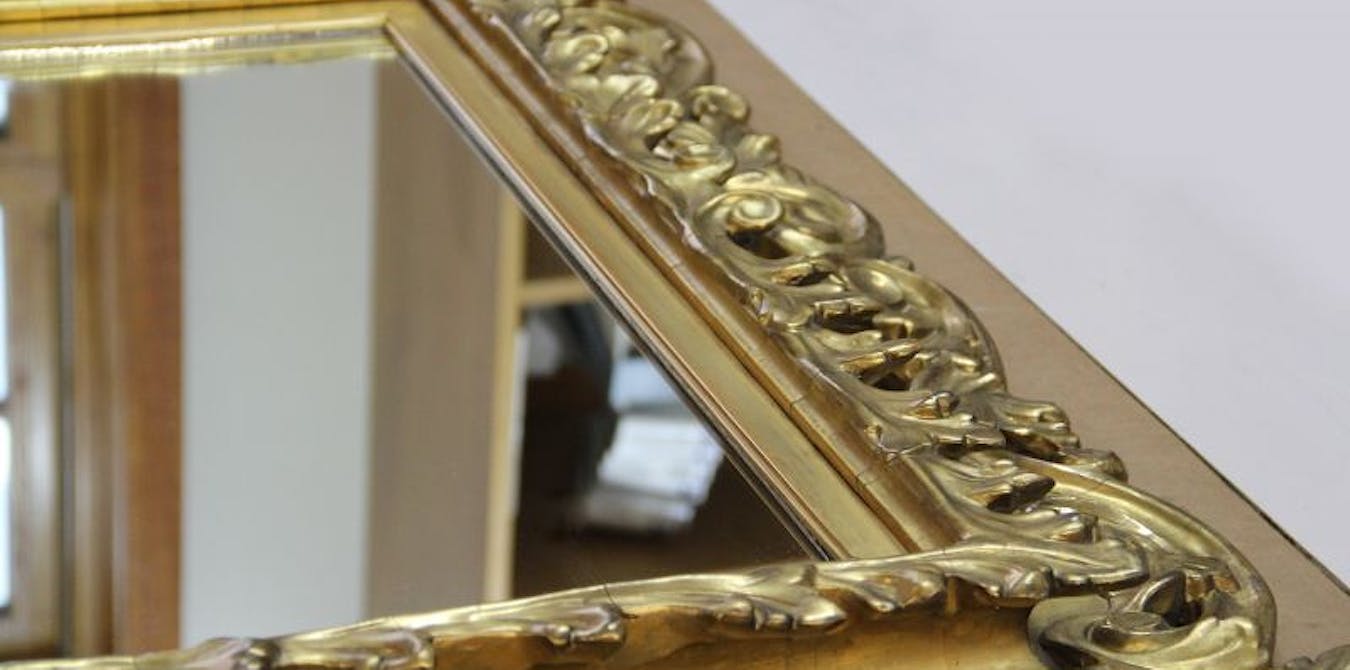Frame Repair: A Study in Patience
The art: Two gilded frames
The restoration: The frames had fallen and much of the ornate detailing cracked off in the crash to the floor. We sorted through the broken pieces and carefully began reconstructing the frames. Frame repair is usually complicated, and that certainly held true here. There were entirely missing segments of the sculpted ornamentation and a number of others were broken. The original gilding was severely worn and soiled, too.
Our first step was reproducing the damaged and missing segments. Hand-made molds were filled with a plaster composite, which, once hardened, were affixed to the frame. The edges between the new ornamentation and the original were then carefully blended.
Next we painted the frames black, a move that was intended to mimic the appearance of bole. The frames were then covered with a size, an adhesive that's used to affix the gold, silver, or metal leaf. The size needs to dry in order to achieve the proper tackiness, so, following a planned layoff, we started applying the gold leaf with a gilder's tip, which is a brush that's usually made from squirrel hair. With the gilder's tip, you pick up the gold leaf and apply it to the size. Then the gold leaf is tamped down to ensure proper adhesion. Any breaks, known as "holidays," are filled in last. It is a tedious process, but one that never fails to impress in the end.
We painted the gold leaf with an antiquing solution, adding special emphasis to the recesses in an effort to mimic natural aging. For the final step, we covered the frames in a coat of a casein-based solution. Time-ravaged frames find new life.


